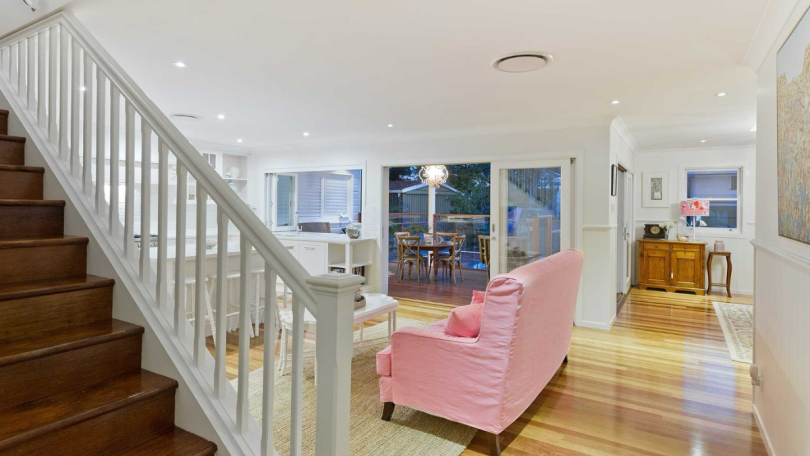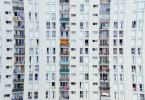Renovation projects can be an exciting yet challenging endeavor for your Singapore home. To help you navigate this journey effectively, it’s important to identify common pitfalls that many homeowners face. By focusing on practical ideas and strategies, you can enhance your living space while avoiding typical missteps. This guide will provide you with valuable insights that meet the unique demands of Singapore’s environment, ensuring your renovation is both stylish and functional.
Understanding the Local Environment
The local environment in Singapore profoundly impacts your renovation choices, guiding you towards designs and materials that complement the unique climate and lifestyle. With limited space and high humidity levels, it’s crucial to create a comfortable living environment that withstands the tropical elements while enhancing your home’s functionality.
Climate Considerations
Before starting your renovation, consider how Singapore’s tropical climate influences the materials you choose. High humidity and heat demand weather-resistant materials, such as treated wood, moisture-resistant paints, and ceramic tiles, which offer enhanced durability. Selecting appropriate insulation options is also vital to keep your home cool and comfortable, reducing reliance on air conditioning.
Space Optimization
Between the constraints of limited space in Singaporean homes and a desire for functionality, you can explore various strategies to maximize your living area. Opt for multi-functional furniture, like sofa beds or storage ottomans, and consider open-concept designs that create a seamless flow. Effective spatial planning enhances both the functionality and aesthetic appeal of your home (this will encourage a more organized and enjoyable living environment).
Between creative solutions such as built-in shelving and removable partitions, you can make the most of every inch in your home. By strategically integrating elements that serve multiple purposes, you not only optimize space but also reflect your personal style (this decision can significantly affect your home’s overall ambience and use).
Environmentally conscious choices, such as sustainable materials and energy-efficient systems, further complement your renovation, ensuring a harmonious blend of style and sustainability.
Budgeting Wisely
One of the most significant aspects of renovating your Singapore home is budgeting wisely. A well-planned budget allows you to manage expenses effectively while avoiding financial strain. Begin by estimating realistic costs covering materials, labor, and potential unexpected expenses. Prioritize your spending by identifying which renovations will yield the greatest impact, such as improving structural integrity or enhancing energy efficiency, ensuring you allocate funds where they matter most.
Setting a Realistic Budget
Against creating a budget that feels more like a wish list, focus on genuine costs associated with your renovations. Dive into research to determine pricing for materials and labor in your area. Don’t forget to factor in a contingency fund for unexpected expenses, as these often arise. Prioritize your needs, distinguishing between important upgrades and desirable enhancements to ensure your budget aligns with your renovation objectives.
Finding Cost-Effective Solutions
Against overlooking the potential for savings, consider sourcing more affordable materials and services that don’t compromise quality. Getting multiple quotes from contractors can help you gauge competitive pricing while discovering budget-friendly alternatives. Explore options such as buying surplus materials or engaging local artisans, as these strategies can lead to considerable savings without sacrificing the aesthetic appeal of your home.
Another way to discover cost-effective solutions is by tapping into online marketplaces and community boards for second-hand materials. Often, homeowners upgrade and sell items, which can save you a significant amount. Networking with friends and family might also reveal hidden gems or trusted professionals who can provide quality work at a reduced rate. Always ask for recommendations and compare options to ensure you’re making informed decisions without overspending.
Engaging Professionals
It is vital to engage professionals during your renovation journey, as their expertise can help you avoid common pitfalls. Collaborating with skilled tradespeople ensures your vision is executed effectively while adhering to regulations and best practices. By investing in professional help, you gain peace of mind while enhancing your home’s value and functionality.
Choosing the Right Contractors
An imperative part of your renovation is selecting reliable contractors. Start by checking their credentials, such as licensing and insurance, while exploring online reviews for insights from previous clients. Interview multiple candidates to assess their experience and approach, ensuring effective communication and trust in this critical relationship (a decision you won’t regret). Be clear about your expectations to foster a collaborative and productive partnership.
Understanding Contracts and Agreements
Beside selecting the right contractor, grasping the terms of renovation contracts is important to protect your interests. Key elements include project scope, timeline, payment schedule, and warranties. Thoroughly review these terms to ensure transparency, fostering mutual understanding that can prevent conflicts down the road. Make it a point to ask questions and clarify any ambiguous points in the contract.
In fact, overlooking details in contracts can lead to misunderstandings and financial disputes later. Ensure that all aspects, including changes to the work scope or extra costs, are documented. Consider having a lawyer review significant agreements for your added security, helping you navigate potential pitfalls while providing clarity to the project ahead.
Sustainable Practices
Despite the fast-paced development in Singapore, sustainable practices in home renovations are increasingly necessary. You can opt for eco-friendly materials and methods to reduce your environmental impact. Consider using bamboo flooring due to its rapid regeneration or energy-efficient appliances that consume less electricity. These choices not only promote a healthier living environment but also align with modern sustainability goals.
Eco-Friendly Materials
Sustainable materials contribute significantly to environmentally conscious renovations. Choose products like reclaimed wood, low-VOC paints, or recycled glass to minimize your ecological footprint. Bamboo flooring is a great option due to its durability and rapid growth rate, while using energy-efficient appliances can significantly reduce your home’s energy consumption. These materials are increasingly available, allowing you to create a stylish and sustainable living space.
Energy Efficiency Solutions
Below are renovations that enhance energy efficiency, such as installing solar panels or double-glazed windows. These solutions not only reduce your energy bills but also lower your overall carbon footprint. Investing in energy-efficient upgrades can lead to long-term financial benefits and contribute to a sustainable future for Singapore. (Choosing the right energy efficiency solutions can affect your home’s overall value.)
In fact, incorporating energy efficiency solutions can significantly impact your home’s comfort and utility expenses at Green Collection. Upgrading to energy-efficient windows can help regulate your home’s temperature, reducing reliance on air conditioning and heating. Furthermore, installing solar panels can harness renewable energy, ultimately leading to savings on electricity bills. (It’s vital to explore financing options to make these renovations more feasible.)
Interior Design Trends
Keep an eye on the evolving interior design trends in Singapore that emphasize both aesthetics and functionality. Opt for designs that reflect your personal style while ensuring they serve practical needs for daily living at 8@BT. This could mean choosing multifunctional furniture, neutral palettes with pops of color, or incorporating natural materials to foster a calming atmosphere. (Consider how your choice of designs impacts both your lifestyle and your home’s value.)
Balancing Aesthetics and Functionality
Above all, achieving a balance between aesthetics and functionality in your home is necessary. Current trends feature minimalist designs paired with intelligent storage solutions, which maximize space without compromising style. Incorporating customizable elements, such as modular furniture, allows you to express your individuality while ensuring your home is livable and easy to maintain.
Importance of Cohesion in Design
Above everything, maintaining cohesion throughout your renovation process is vital for a polished look. This includes carefully selecting color schemes, materials, and furniture that complement each other. To achieve harmony, use a consistent color palette and stick to similar textures across your choices. It will enhance the overall ambiance while creating a sense of flow from room to room.
Plus, achieving cohesion in your design is key to a well-integrated living space. Selecting a unified theme will help guide your material choices, minimizing the risk of clashing styles. When in doubt, refer back to your original concept while shopping for items; this will help maintain focus and consistency throughout your home, enhancing its overall aesthetic appeal.
Post-Renovation Checklist
Now that your renovation project is complete, it’s crucial to have a thorough checklist to evaluate its success. This final assessment ensures that you are satisfied with the work and that everything aligns with your vision and expectations. By prioritizing this checklist, you can avoid potential pitfalls and enjoy your newly transformed space to its fullest.
Quality Inspection
After your renovation, conduct a meticulous quality inspection. Check construction quality by examining the structural elements for sturdiness and finish details like paint, tiles, and fixtures for any imperfections. Ensure all cabinets and drawers function smoothly, and that plumbing and electrical fixtures are installed correctly. Document any discrepancies to address with your contractor as soon as possible.
Maintenance Planning
One of the best ways to preserve your renovations is through effective maintenance planning. Establish a schedule for regular checks to keep your upgrades in top shape. Consider tasks like cleaning HVAC systems, resealing surfaces, and inspecting for signs of wear or damage. Taking proactive steps ensures longevity and protects the value of your property over time.
A well-planned maintenance routine not only extends the life of your renovations but also helps you catch small issues before they escalate into costly repairs. Create a detailed maintenance checklist that covers all key areas of your home, from appliances and plumbing to gutters and landscaping. Consistently adhering to this plan will keep your home in excellent condition, reflecting the investment you’ve made during your renovation process.
Final Words
With these considerations in mind, you can navigate the renovation process for your Singapore home with confidence. By avoiding typical pitfalls and focusing on smart design choices, you’ll create a space that reflects your personal style while ensuring functionality. Prioritize planning, budget wisely, and select durable materials to achieve long-lasting results. Embrace the journey and enjoy transforming your home into a sanctuary that suits your lifestyle.







